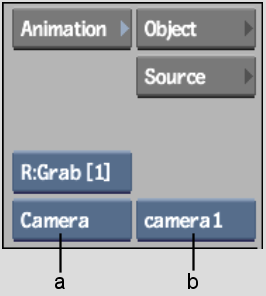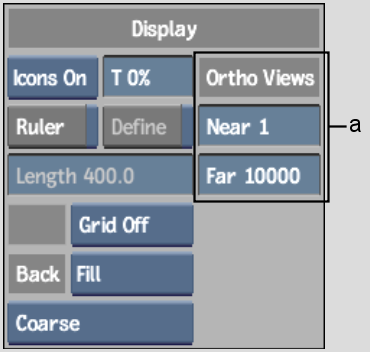You can view the scene from Camera view and three orthographic views. In Camera view, an object becomes smaller as it moves farther away from the camera. In orthographic view, an object remains the same size, regardless of its distance from the camera. Orthographic views are more helpful for aligning objects.
The following figures illustrate the different angles by which the scene can be viewed. The scene in this example contains a grey back clip and the 3D model of an apple.
Front view |
Camera view |
Side view |
Top view |
To set camera and orthographic views:



(a) View box (b) Camera box
| Select: | To: |
|---|---|
| Camera | View the scene in Camera view. This is the scene as viewed by the camera eye. In other words, your field of vision in world space is equivalent to the viewing frustum of the camera. The size of objects depends on their distance from the camera eye. |
| Top | View the scene as if you are positioned on the positive Y-axis. This is an orthographic view; there is no perspective deformation. |
| Side | View the scene from the side, as if you are positioned on the positive X-axis. This is an orthographic view; there is no perspective deformation. |
| Front | View the scene as if your line of vision is directed into the camera eye. This is an orthographic view; there is no perspective deformation. |
When using an orthographic view, you may notice that parts of the object you are viewing are getting cut off. Adjust the near and far ortho views. You gain more space to view the object, but lose some viewing precision.
In the Display section of the Action Setup menu , adjust the Near and Far fields.



(a) Ortho Views in Setup menu
In addition to Camera and the three orthographic views, you can also select Schematic view, which uses nodes to represent the objects in the scene and arrows to illustrate the relationships between objects. See Reshaping Using the Channel Editor.